There are many places to hear live fado in Porto. And although the music is the same, the quality, authenticity and type of experience can be very different.
This article is divided into three parts:
1. The best places to listen to fado in Porto;
The best places for live fado in Porto
One of the most interesting features of fado in Porto is the variety of shows you will find. That’s why choosing a type of experience first and then choosing a place can be a good idea.
If you want to listen to a show that lasts about 1 hour without interruptions, without food or drinks selling and 100% focused on the music, you should go to a fado concert.
If you want to have dinner and listen to several 15-20 minute pieces during the evening, you should go to a fado dinner.
If you’re short on time and prefer to group several activities in one place, you can go for a combined experience.
Have you decided what kind of fado experience you want? So it’s time to decide which place. Here are my suggestions:
Fado Maior do Porto: the best concert

Fado Maior do Porto offers an intimate musical experience in a small space typical of old Porto. Here you will witness an unprecedented encounter in Portugal between excellent representatives of the most popular fado tradition and student groups that preserve Coimbra’s fado style.
I want to see all the fado concerts in Porto
Casa da Mariquinhas: the best dinner with fado
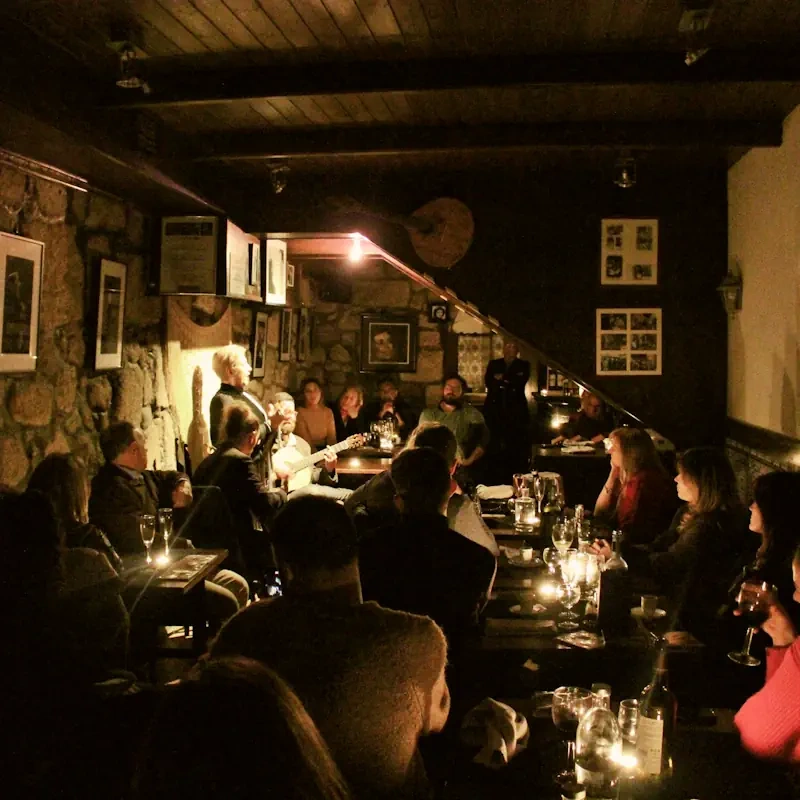
Founded in 1968, it is the oldest fado house in Porto. It’s a small space, with great acoustics, conducive to complicity between the audience and the good resident artists, where the granite walls, the lighting, the decoration and its history make this one of the best places in the country to enjoy an intimate fado experience with dinner.
I want to see all the fado houses with dinner in Porto
Caves Fonseca: the best combined experience
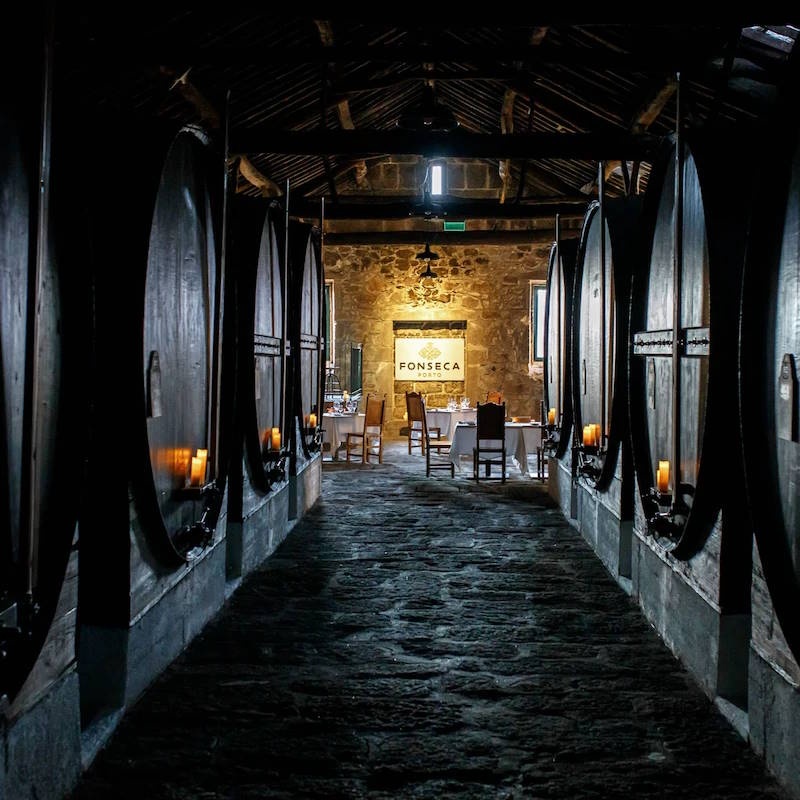
Visits to port wine cellars are one of the region’s must-do activities. This is a quality initiative by Caves Fonseca, with a visit and wine tasting, followed by a dinner with fado in the cellars. It’s a good alternative for those who have little time to explore Porto.
I want to know all the experiences combined with fado in Porto
All the places with fado in Porto
There are four types of fado show in our city:
Fado concerts
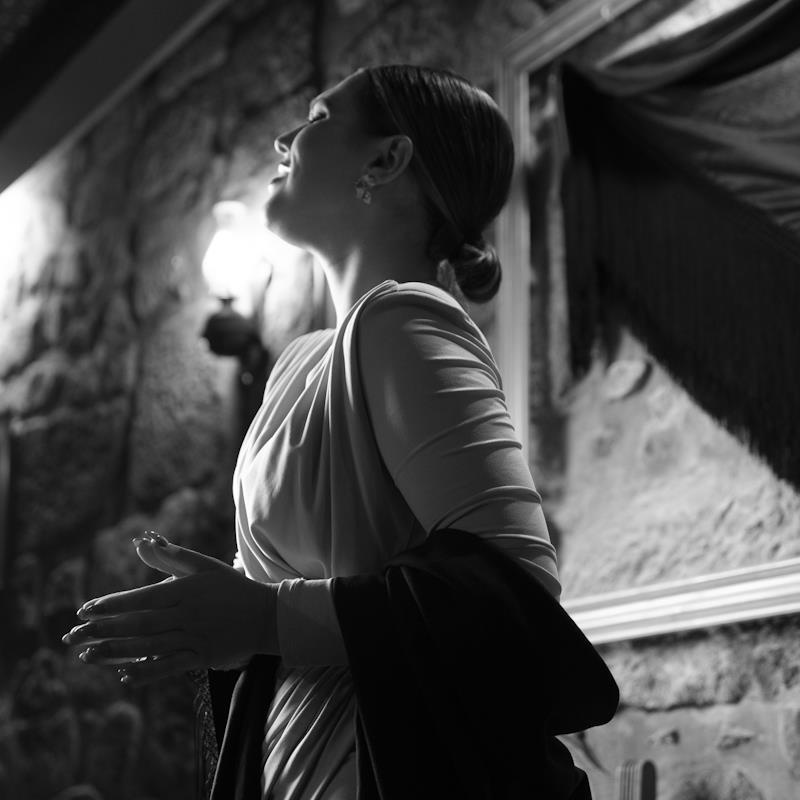
If you want to have a music-focused experience, without food and drink sales, and meet some of the city’s best artists, fado concerts will be your best option.
They last an average of one hour and usually occur in the late afternoon and evening. Ticket prices range from €16 to €22 and every seat offers you a glass of port wine.
Each concert has different characteristics. So it’s worth understanding what each of them has to offer.
There are 12 sites that offer this type of experience:
- Fado Maior do Porto;
- Destino Fado;
- Ideal Clube de Fado;
- Fado na Baixa;
- Casa da Guitarra;
- A Casa do Fado RIbeira;
- A Casa do Fado S. João Novo;
- A Casa do Fado Sé;
- Clube Real do Fado;
- Presidencial Fado;
- Cais do Fado;
- Nata do Fado.
Considering the artistic proposal and the artists’ quality, the best concert is the one from Fado Maior do Porto.
Fado Maior do Porto

Fado Maior do Porto offers an intimate musical experience in a small space typical of old Porto. Here you will witness an unprecedented encounter in Portugal between excellent representatives of the most popular fado tradition and student groups that preserve Coimbra’s fado style.
Destino Fado, Ideal Clube de Fado, Fado na Baixa and Casa da Guitarra are also good options
Destino Fado
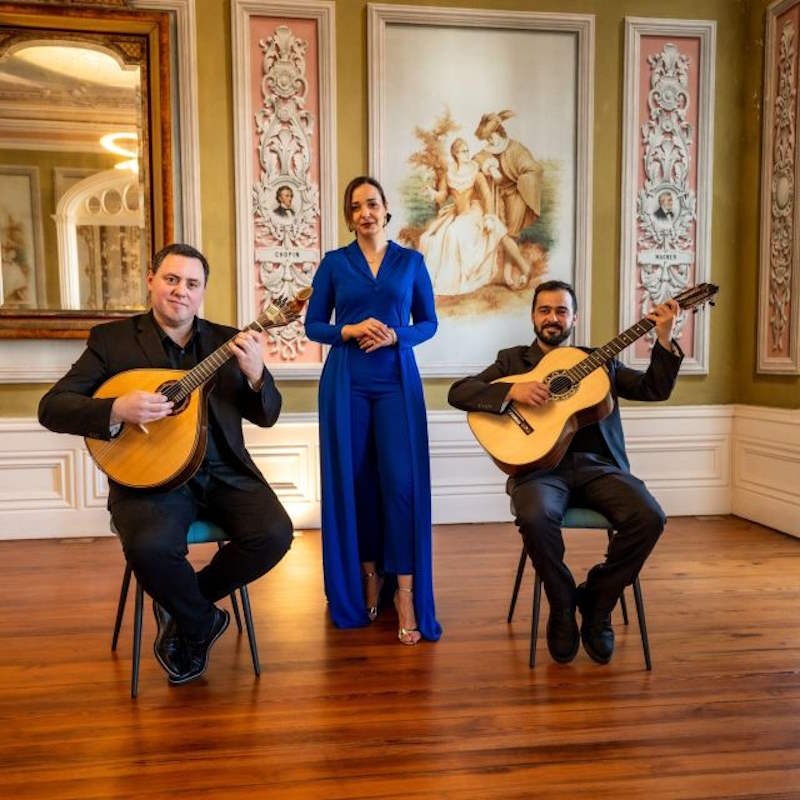
The Destino Fado concerts are hosted by Cláudia Madur, one of the most famous fado singers from the north of Portugal. They take place in a century-old noble hall. XIX at Menina Colina Gesthouse.
Ideal Clube de Fado
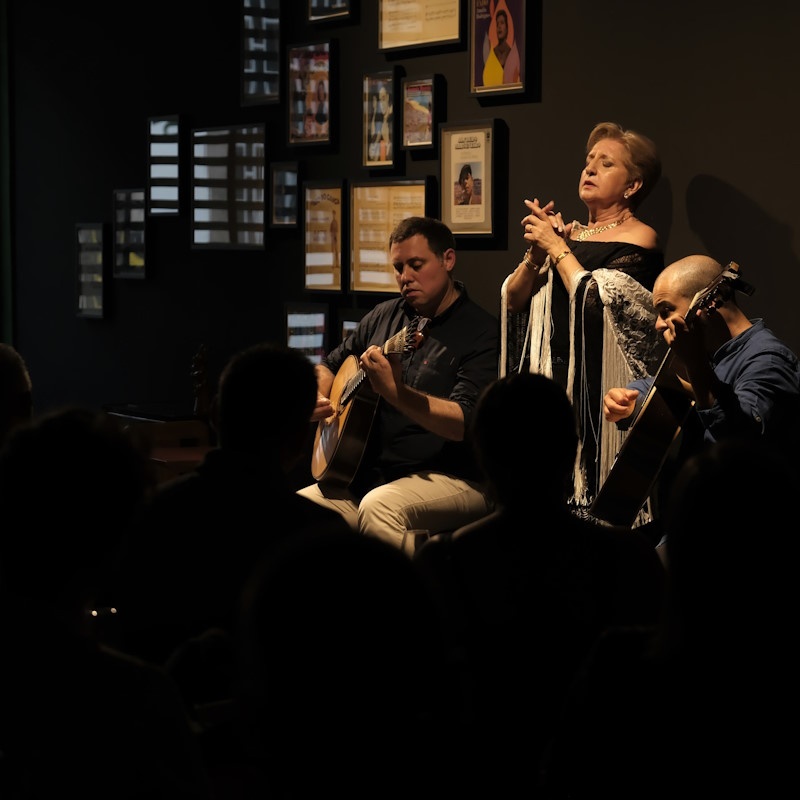
Ideal Clube de Fado presents shows exclusively dedicated to Traditional Fado (old style). The cozy space, with its vintage décor, promotes a good proximity between the public and the good artists it presents.
Fado na Baixa
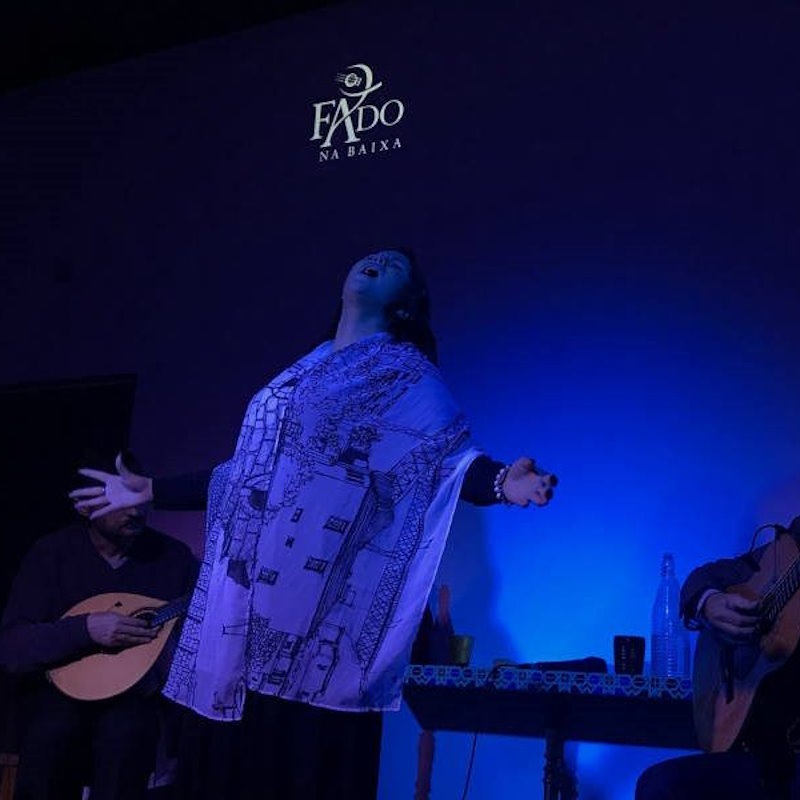
Fado na Baixa offers a concert in a small auditorium where the music coexists with a documentary (translated into Spanish, French or English with audio guides). If you’re looking for a more didactic experience, this show is for you. Otherwise, you won’t enjoy watching several videos during the performance.
Casa da Guitarra
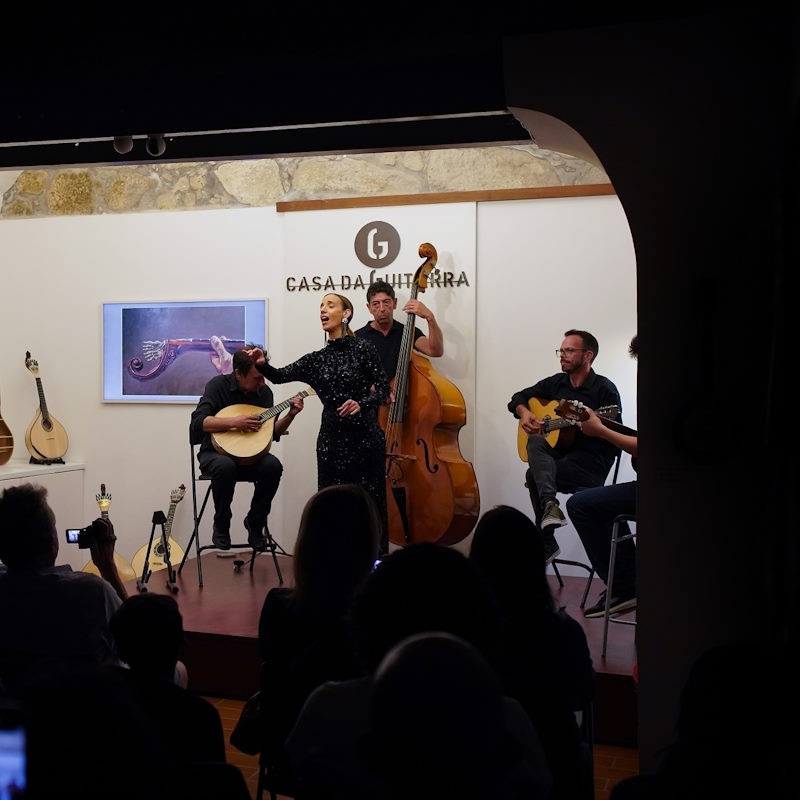
Casa da Guitarra is a cordophone store where, from 6pm, it becomes a mini auditorium for those who want to listen to fado. The concert is especially interesting if you want to visit the store.
If you can’t get a seat at any of the above concerts, the three seats at A Casa do Fado, Presidencial Fado or Cais do Fado are a reasonable alternative.
A Casa do Fado – Ribeira

It is located in the basement of a building in one of Porto’s most popular areas – Ribeira. The acoustics in the basement are good, but the humid, stuffy air (if there are a lot of people) and the uneven stairs are something to consider before going. Children under 12 are welcome and do not pay. Halfway through the concert, one of the musicians will give an explanation of fado.
A Casa do Fado – São João Novo
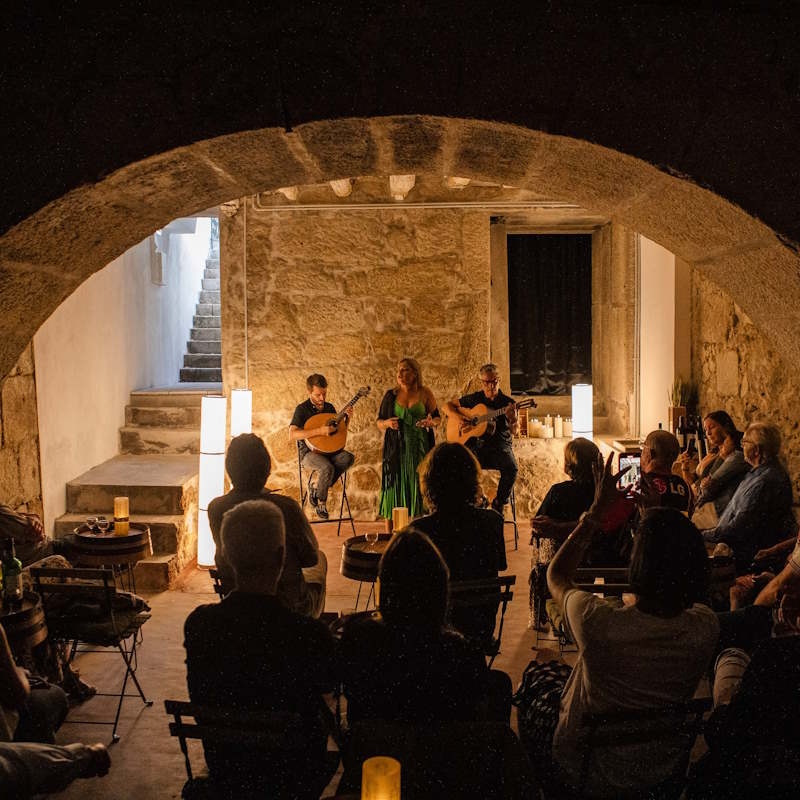
It is located in the old pantries of the church of São João Novo, and is right under the sacristy of the church! Children under 12 are welcome and do not pay. Halfway through the concert, one of the musicians will give an explanation of fado.
A Casa do Fado – Sé
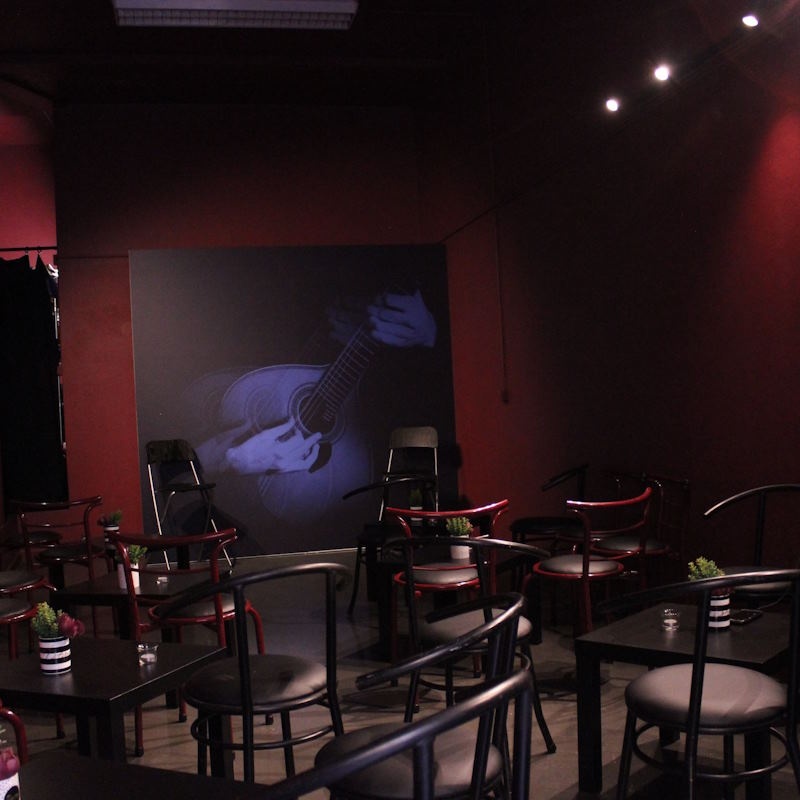
Although the experience of the space is not as interesting as the previous ones, this place is located in one of Porto’s most typical neighborhoods – Sé. Children under 12 are welcome and do not pay. Halfway through the concert, one of the musicians will give an explanation of fado.
Presidencial Fado
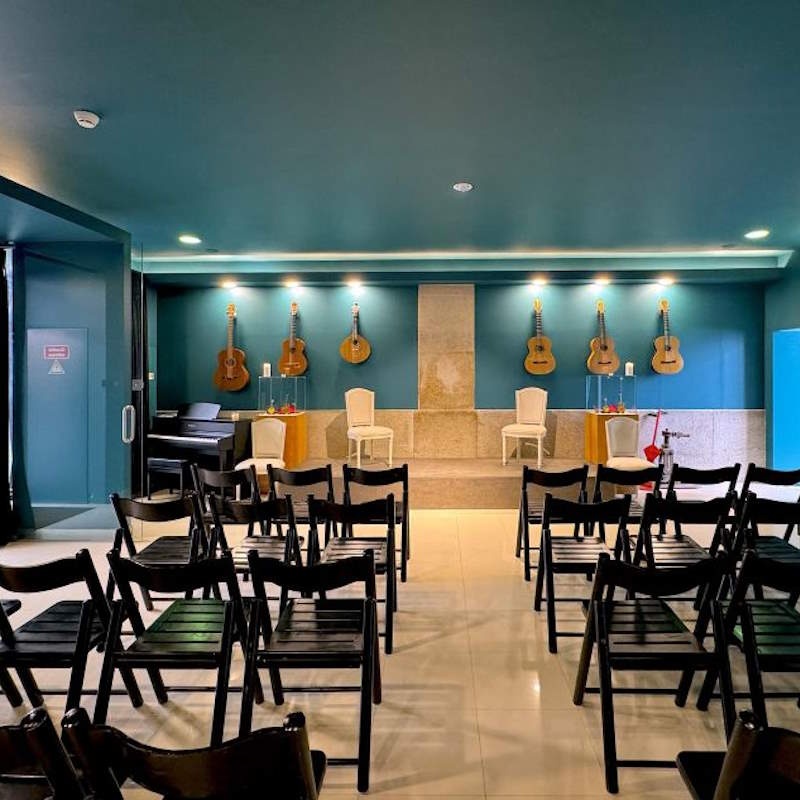
Presidencial Fado is located inside S. Bento Station and offers an intimate concert.
Cais do Fado
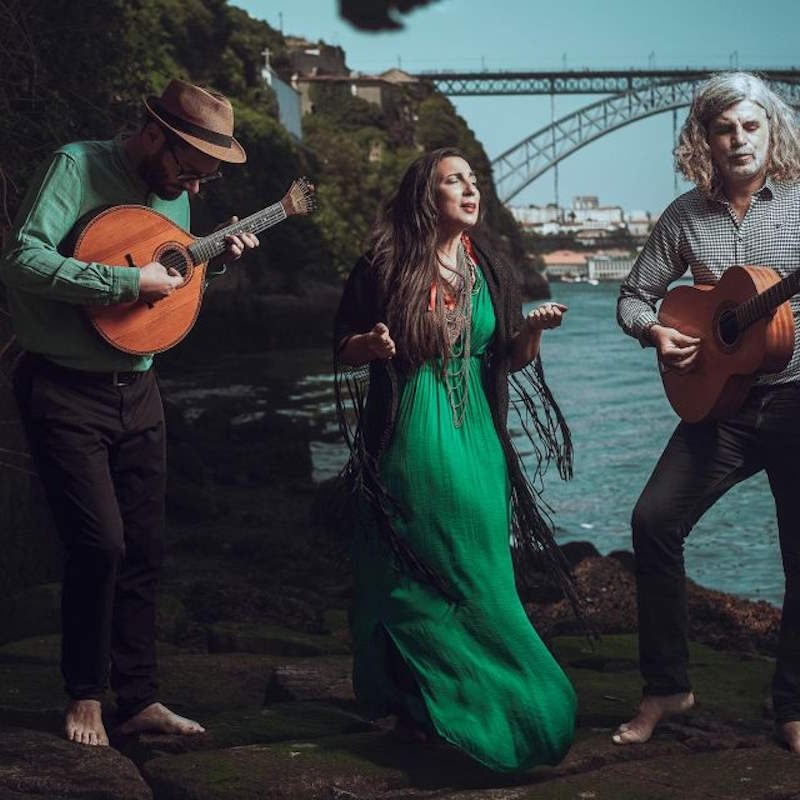
Cais do Fado is a project by three musicians. The concert is by the river, on the Gaia side.
Clube Real do Fado and Nata do Fado may also be an option if you can’t get tickets for the other concerts.
Clube Real do Fado
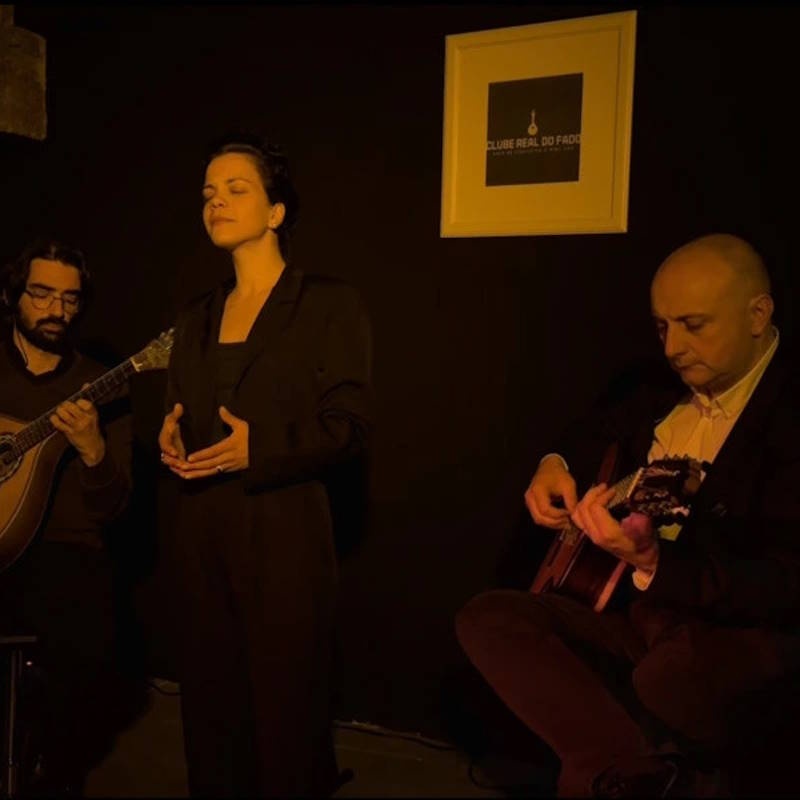
Clube Real do Fado is a project born out of Taberna Real do Fado for those who want to listen to a show without having dinner
Nata do Fado
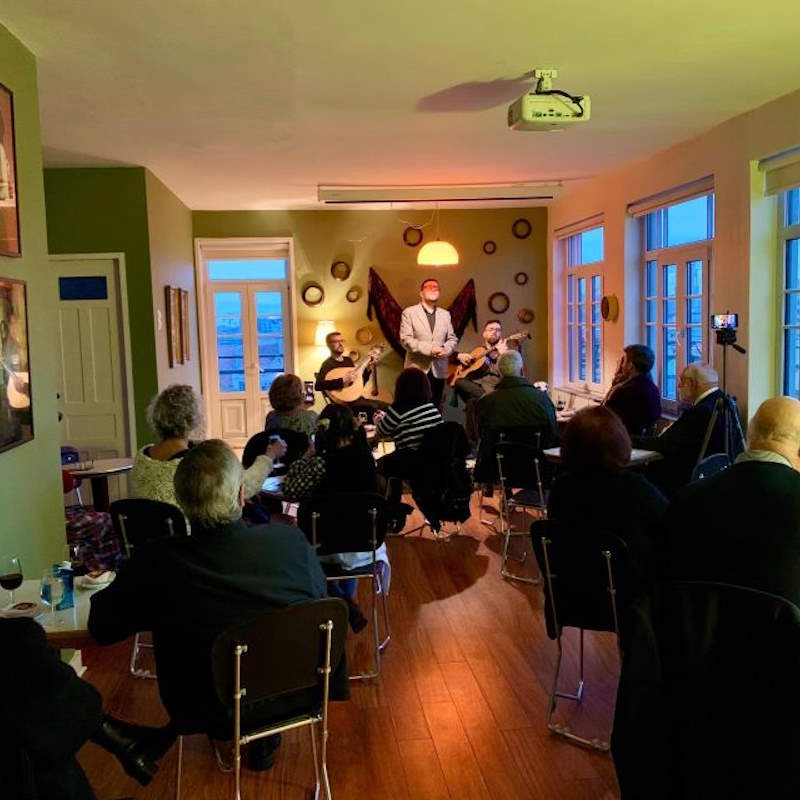
Nata do Fado is a project of Maus Hábitos. The offer of a pastel de nata is the main highlight.
Fado and Dinner
There are several restaurants in Porto that regularly have live fado during dinner. However, it is important to distinguish between specialized fado restaurants, known as “Casas de Fado” (fado houses), and conventional restaurants that with some regularity offer fado dinners.
Fado houses
Fado house is not, contrary to popular belief, the name given to any place with live fado. It is indeed a typical restaurant specialized in fado dinners.
It is different from a regular restaurant because all the space and decoration are dedicated to this thematic. They always have fado singers and guitarists during their opening hours.
This type of experience is particularly recommended for those who want to dine and listen to fado throughout the evening and spend a longer moment with family and friends in a relaxed atmosphere with fado and food.
The show is split into small sets and is usually alternated with the various dinner moments (starter, main course, dessert, coffees, and digestifs). Each part lasts approximately 20 minutes.
It is usual in fado houses to present two singers each night: a female voice and a male voice.
There are 6 places that offer this type of experience:
- Casa da Mariquinhas;
- Aniki;
- Portuguese Fado;
- Mal Cozinhado;
- O Fado;
- Taberna Real do Fado;
Casa da Mariquinhas

Founded in 1968, it is the oldest fado house in Porto. It’s a small space, with great acoustics, conducive to the complicity between the audience and the good resident artists, where the granite walls, the lighting, the decoration and its history make it one of the best places in the country to enjoy an intimate fado experience with dinner.
Aniki
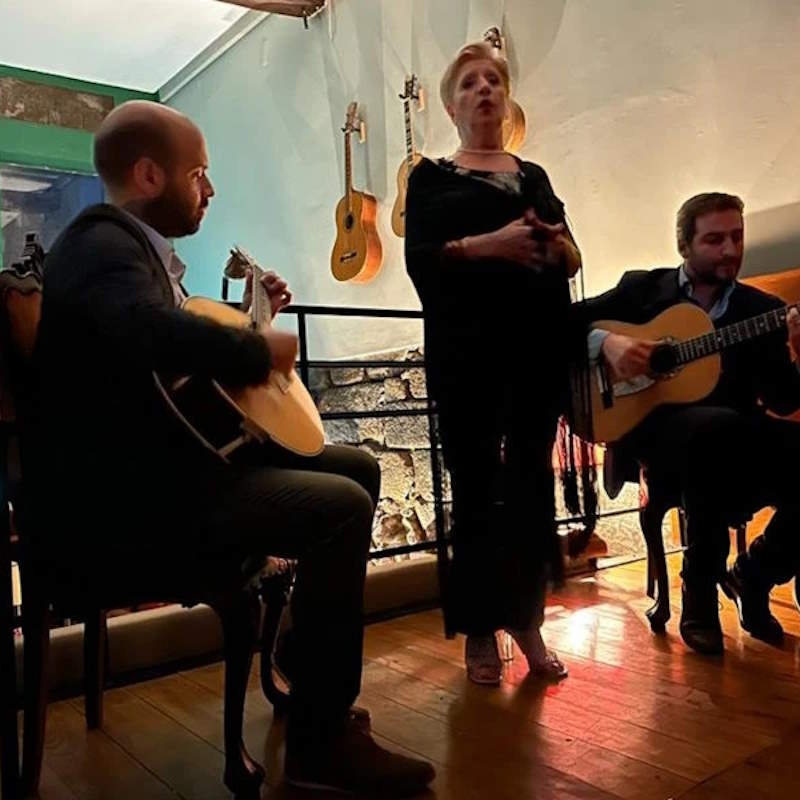
Aniki, located next to Ribeira, is a place where modern and traditional go hand in hand, both in terms of decoration and menu. As well as good music, you’ll be able to see various cult objects related to the history of fado.
Fado Português
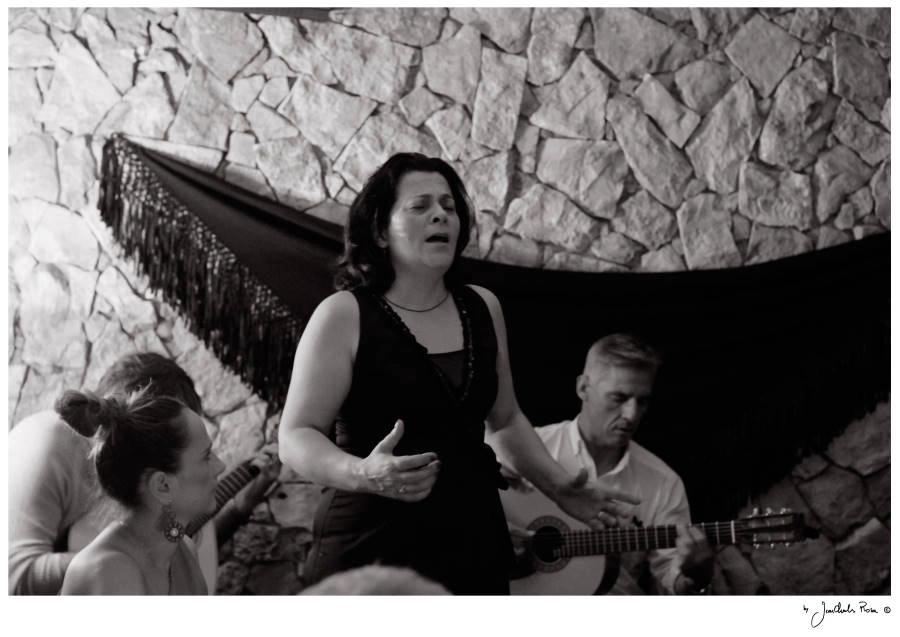
Fado Português, despite being in the nearby town of Vila Nova de Gaia, is within a quick drive from the centre of Porto. In this simple and unpretentious space you won’t see the luxuries of other fado houses, but you will certainly enjoy an intimate and familiar atmosphere, far from the tourist circuit of Porto’s historic center.
Mal Cozinhado

Mal Cozinhado is one of the most original places to listen to Fado in Porto. It is a historic building next to the Douro River, with granite walls and floor and a ceiling with wooden beams that are more than 6 centuries old.
O Fado
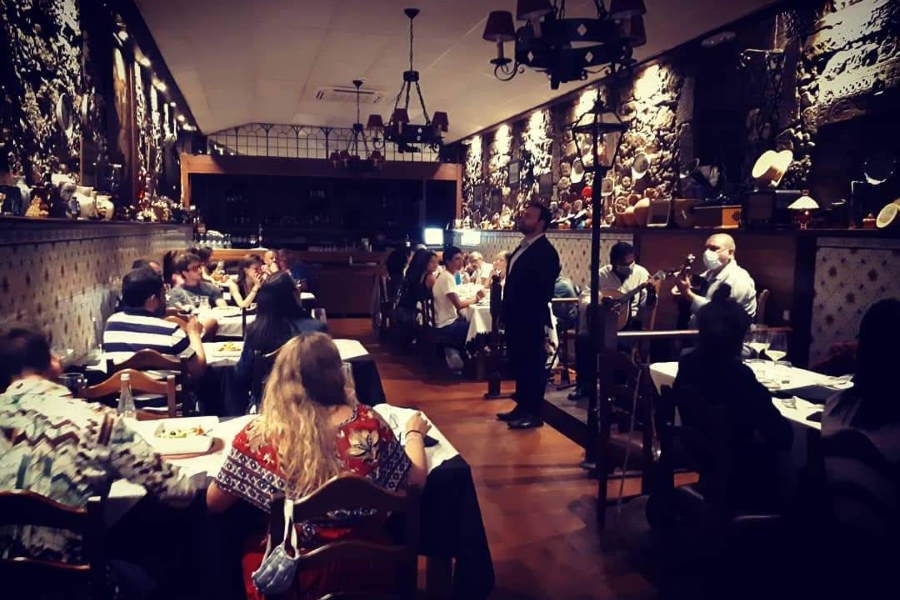
Fado is one of the most famous and oldest Fado Houses in Porto. It’s a family business with Manuela Almeida, the matriarch of the family, in the kitchen and the sons in the management and customer service. The food is excellent.
Taberna Real do Fado
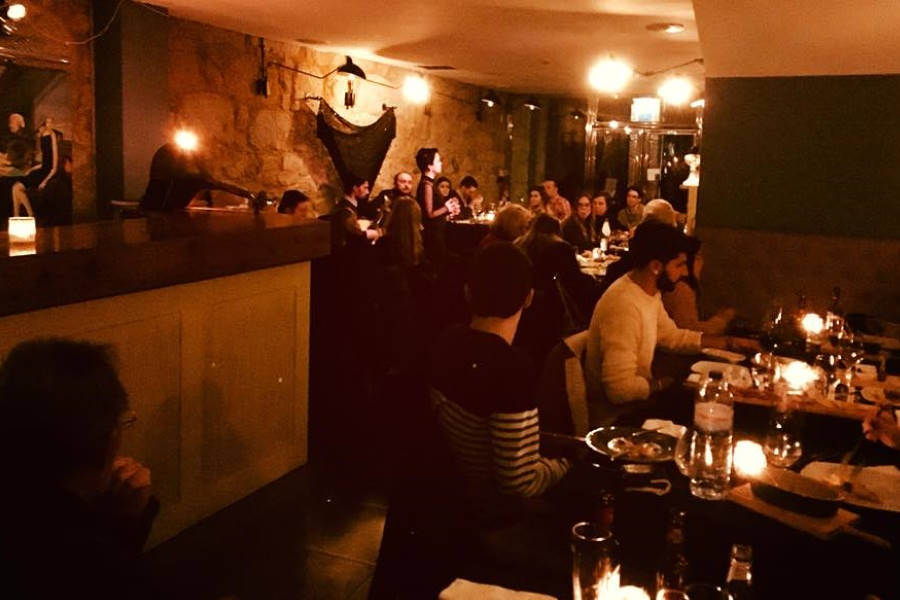
Taberna Real do Fado may not be as old as some Fado Houses in Porto, but it has an experienced and competent team, and it’s a good places to listen to Fado with dinner in the city.
Fado combined with other experiences
In Porto there are cultural experiences that include a Fado concert. If you only have a short time in the city, these options might interest you.
There are three places that offer this kind of experience with a fado concert:
- Caves Fonseca;
- Caves Rozès;
- Caves Calém;
- Herança Magna.
Caves Fonseca

It was the fado venues that impressed me the most in 2023. A quality initiative where you can enjoy a visit with wine tasting, followed by a dinner with fado.
Caves Calém
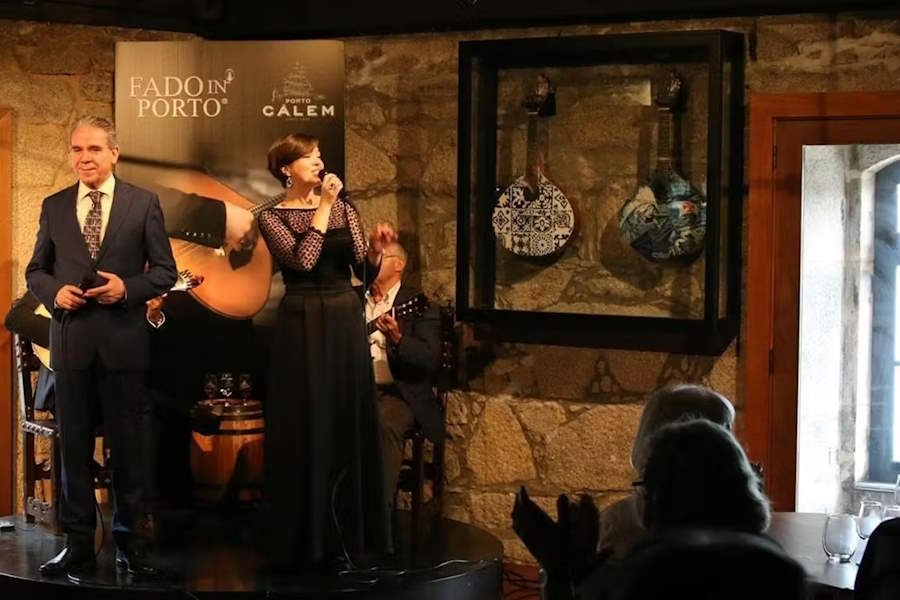
It’s not my main recommendation. because the fado experience is of poor quality. This is because most of the repertoire performed is “fado for tourists” and the large space is not conducive to sharing between the artists and the audience. However, it is a very popular experience.
Rozès Cellars
The Caves Rozès offer private tours with several tasting options. This is a premium, personalized experience with a good intimate fado show at the end.
Herança Magna
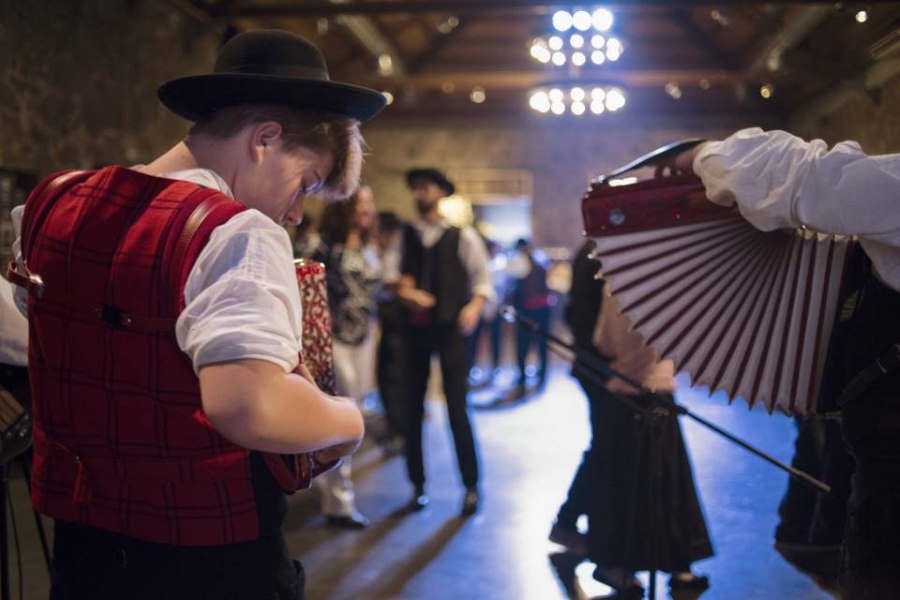
Herança Magna offers a show featuring the two most important musical manifestations of traditional Portuguese music – Fado and Folklore. Before the show, there is a dinner with traditional food to enjoy a musical and gastronomic experience.
Fado vadio
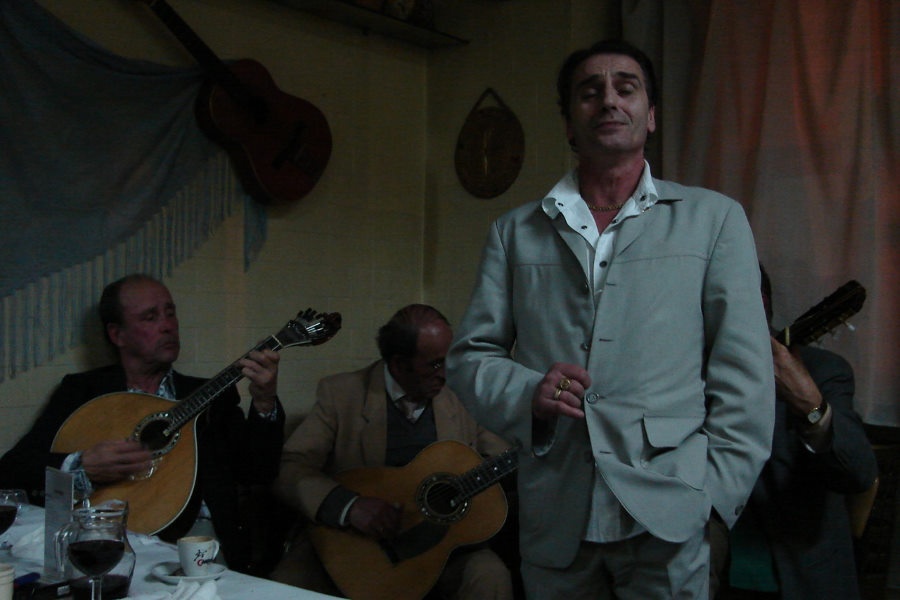
Fado Vadio, more than a concert, is a gathering of people who share a passion for fado. It works like karaoke but with guitarists instead of recorded music.
Most of the people who sing at these events are not professionals. So, if you want to hear good artists you should go to a fado concert or have dinner in a fado house.
This experience is especially suitable for those who want to sing, even if they are amateurs. But you can also participate as a listener.
Places where you can hear fado vadio:
Knowledge so you can better appreciate a fado show
More than talking about what fado is and its history, I want to give you information so that you can better enjoy a fado concert anywhere in Portugal.
- Why listen to fado live?
- What a good fado experience is made of:
- Understanding a fado concert:
- Etiquette at a fado show;
- Misunderstandings about fado in Porto;
- Conclusion.
Why listen to live fado
“And people say: this is the real fado! (…) But it’s the real fado, because that, there… I’m close to the public. And the public is complicit.”
Fernando Maurício, Fado Falado – Um Século de Fado
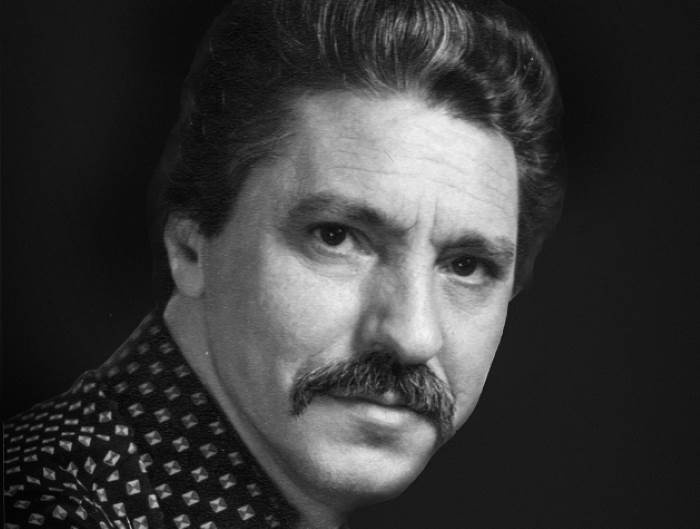
I know many people who say they don’t appreciate fado. But I don’t know anyone who has heard live fado in a good setting and with good artists who would say the same!
Why does this happen?
Because listening is only one part of the fado experience. True fado implies sharing and complicity between artists and audience.
When this happens, it is said that “there was fado”.
Some fado houses include messages such as ” house x – where fado happens” in their pamphlets and posters. With these words they intend to transmit that, aside from listening and watching fado singers and guitarists, we will experience the harmony between them and the public and, as Fernando Maurício said, we will become complicit and, in this way, live the true fado.
Furthermore, when you are in front of good fado singers and guitarists you are surrounded by a sound that goes straight to your heart and awakens strong emotions that transport you to a journey to a deep and mystical Portugal.
That’s why hearing fado live is much better than hearing it on a recording! But this alone is not enough to have a good and authentic fado experience.
What makes a good fado experience
From my experience as a musician, listener and organiser of fado events, I consider that the characteristics that most contribute to a good show are the following:
Genuine fado
In this 1976 video, João Braga asked Alfredo Marceneiro how he saw the future of fado in Portugal, to which he replied, “The future of fado is that I hear singing, it’s songs and cançonetas…” And then you can still hear someone saying “some shit!”
And I can say that Alfredo Marceneiro made a good prediction because nowadays in most shows, not just in Porto but all over the country, you’ll hear a mixture of fados, “canções e cançonetas”, popular marches and folklore. They’re not ” some shit”, but they’re not fado either!
How many, many times I am here and, for example, I have to sing because there is someone there who wants to listen. But, suddenly, I hear the Casa Portuguesa,because it has to be, because there are a lot of foreigners singing the Casa Portuguesa, I hear very light things and they say: Eh, fado singer! I don’t sing anymore, because a person who is saying when you sing Casa Portuguesa or when you sing Cheira a Lisboa or when you sing Caracolitos and those things, they’re just things to liven things up and when I hear Eh, fadista!, I don’t sing because I see that the person doesn’t know anything about fado.
Aren’t those songs fado?
They are not fado. And if they say: Eh, fadista!, they don’t understand. For what will I sing afterwvards? Then they run with me, if that is what is beautiful, if that is what is good (I keep saying that it is good and that it is beautiful) but it is not fado.
Argentina Santos, Fado Falado – Um Século de Fado
I know this may sound strange, but there are several reasons for this phenomenon and they are mainly related to commercial and tourist motivations.
But as this has been happening for some decades, and even Amália Rodrigues herself, who was the most popular personality of fado in Portugal, promoted this kind of approach in her concerts, there was a normalisation effect with some misinformation in between.
In other words, we are so used to hearing the fado singers singing this mixture that we don’t even question what is fado and what is not, because it is assumed that everything the fado singer sings is fado.
Besides, the music broadcasting media are also oblivious to the fact that fado singers sing other styles. For this reason, they label everything they sing as being fado.
This even led to an embarrassing situation when in 2020 Ricardo Ribeiro, one of the greatest contemporary fado singers, saw his album nominated by the Prémios Play for best fado album and asked to have it removed from the list because he considered it wasn’t fado. Check the news here.
If you are interested in knowing more about this, go to the part where I explain the repertoire of fado singers.
Good performers
For fado to happen, it is essential that there is a strong connection between the public and the artists, and for this to happen, it is necessary that the artists have a set of qualities, without which fado cannot be transmitted.
No matter how much you say
Manuel Almeida
Fado is a neighborhood song
It’s not a fadista who wants to be one
But who was born a fado singer
To be a good fado artist, it is not enough to have a good voice or play well. The singers and guitarists have to master the specific language and aesthetics of this style, which are very different from pop, jazz, or lyrical.
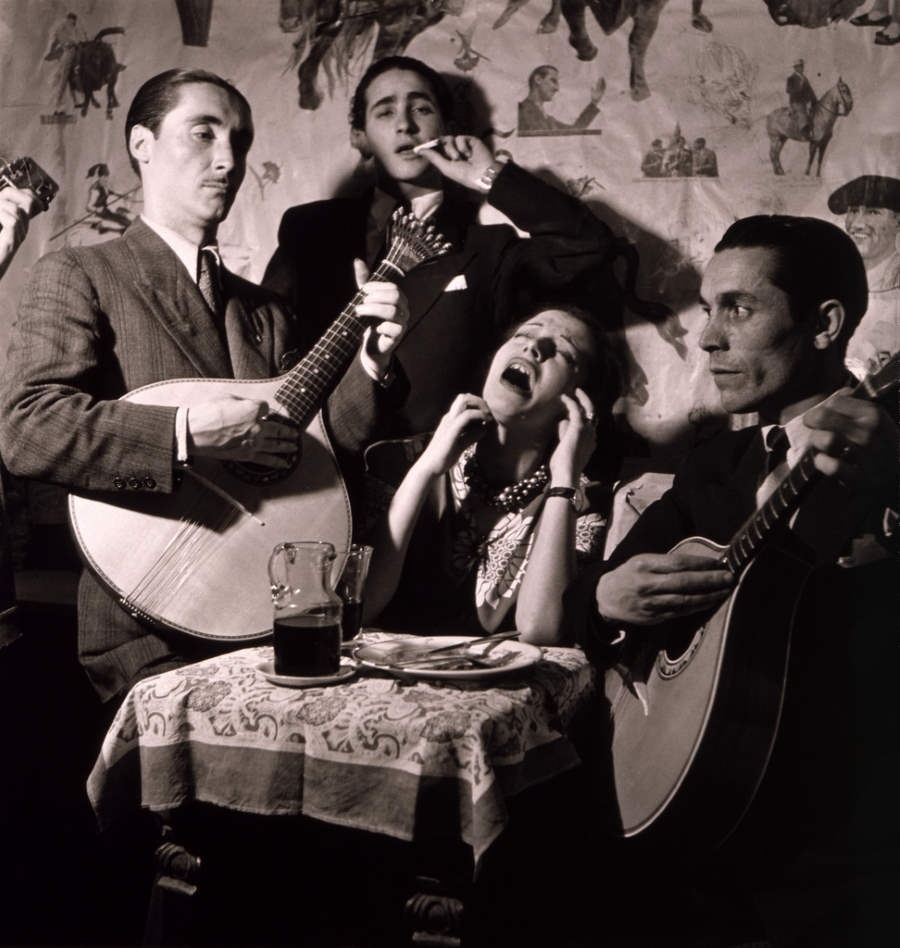
But as in any musical style, the technical side is also important. The better it is, the more resources the artist has to express and communicate with the public because there is little point in giving 100% to the music if they sing or play badly.
I remember once I was playing at Janelas do Fado, in Matosinhos, when a client asked me to sing. He even seemed to be genuinely giving himself deeply into the music and wanting to communicate, but the result was a room full of people holding back laughter… And this doesn’t make the fado happen!
But it is also important to realize that a good fado singer doesn’t need to fit the stereotype of what most people consider a good singer.
Some of the most respected singers in the fado community, such as Beatriz da Conceição, Alfredo Marceneiro and Rodrigo, among others, have a style and a way of singing that are extremely appreciated in their milieu, but which are not usually given due value by the general public.
On the other hand, there are fado singers like Mariza or Cuca Roseta who have tremendous success with the masses, but who are not especially appreciated among the big fado lovers.
Listen, for instance, to this interpretation by Beatriz da Conceição (born in Porto) of Fado Alfacinha:
And listen to this interpretation of the same fado, but sung by Mariza:
I believe that most people prefer Mariza’s way of singing, but most fado lovers take other things into account – originality, complexity, depth, rhythm, intensity of performance and command of the language – when listening to a fado singer. That is why they prefer Beatriz da Conceição.
To conclude this reflection on what it is to be a good fado singer, I will quote Joel Pina, one of the most important personalities in the history of fado:
I know I have fado inside me, I know that. Because there are a lot of people out there who don’t have fado. They may even have a lot of musical intuition, but they don’t have fado. The fado… there is a mystery here that… There are various voices about the fado. And some voices are more profound, come from inside, that communicate with the person that really transmits that message that the person wants to pass on, and passes on, and the other person feels goose bumps. I think that’s what fado is.
Joel Pina (transcrito de “Joel Pina: O Professor“)
Silence
Silence is very important not only for those who are performing, but also for those who are listening.
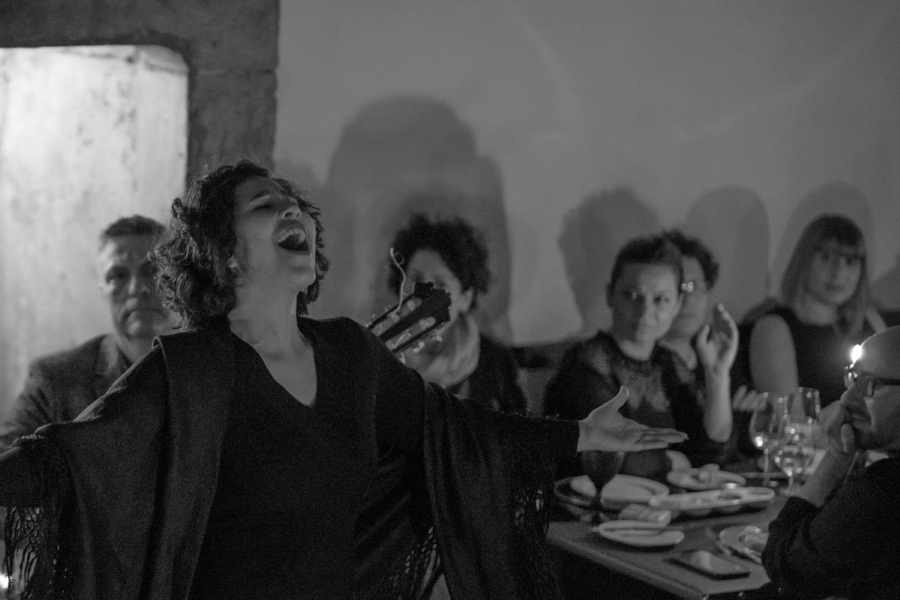
For the artists, the silence of the audience is a demonstration of respect and interest, and this leads them to give their best. On the other hand, the opposite is bothersome and leads to the performance being faked.
“…If they’re making noise, our job is to pour it out. Yes, it’s singing, but not for real…”
Fernando Maurício, Fado Falado – Um Século de Fado
For the audience, silence is essential because, besides enjoying a better artistic work, they will feel the emotion of the artists. This is the only way to experience the true fado.
That’s why there’s the famous expression ” silence that fado will be sung”.
Good audience
In an interview Vicente da Câmara was asked if there was a proper atmosphere for singing fado, to which he replied:
There is, it’s the people who are there. There are some people who think you have to have low lights and you have to have things hanging, little balloons, posters on the walls and so on. That, to me, never affected me (…) I am concerned, yes, about the people who are. Those are the ones that make the good or bad environment.
Vicente da Câmara, Fado Falado – Um Século de Fado
On this matter, Raul Nery also said the following:
The audience listening to fado must be in total harmony with the fado singers or players. Only when this harmony is achieved we can say that the conditions are created for a true fado atmosphere.
Raul Nery, Fado Falado – Um Século de Fado
Among musicians when it is said that “the audience was good,” it means that the harmony Raul Nery talks about happened. When this happens the artists truly connect with the audience and the result is an excellent performance which in turn grabs the audience’s attention and feeling even more.
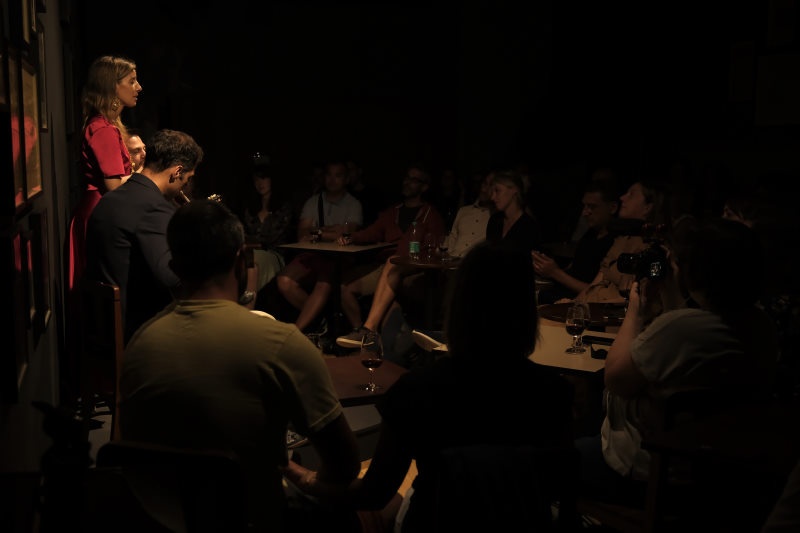
Argentina Santos on the importance of a good audience said the following:
… that (the will to sing) has to be a drive that gives me and I have to look at the people and I have to see: they like fado. If they don’t like it, it’s not worth it.
Argentina Santos, Fado Falado – Um Século de Fado
So when you go to a Fado concert, be willing to relax and devote yourself entirely to the experience. Look at the singers and the guitarists and not the mobile phone. Listen, feel and concentrate on the music.
This way you will create the ideal environment for the artists to give their best and open the door to fado and to their hearts. At the end of each song don’t be shy of giving feedback through warm clapping to let the artists know you’re enjoying it!
If you want to know how to behave at a fado show, jump to the section where I talk about etiquette.
Intimate space
As the essence of this music is in the sharing between the artists and the public, the intimate and welcoming spaces, by favouring proximity and complicity, are more propitious to experience the real fado.
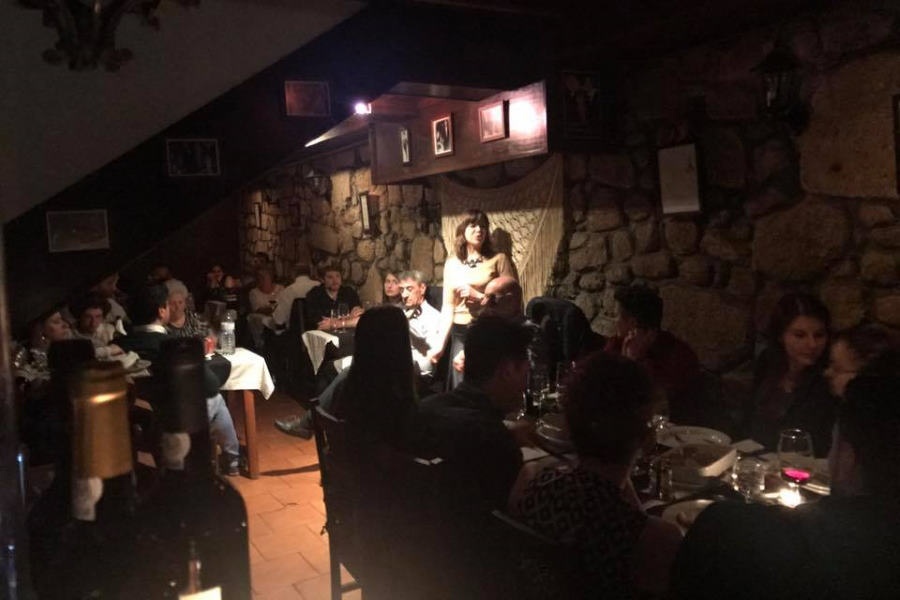
The quality of the listening experience is also better if we are close to the voice and instruments.
On this issue, Raul Nery, said the following:
Fado, to be well sung, needs its own atmosphere. In fact, some people who say they don’t like fado have never heard it in a proper environment, because it is not in a concert hall that fado can be better appreciated.
Raul Nery, Fado Falado – Um Século de Fado
Good acoustics (and no microphones)
You can even be in front of great artists, in absolute silence and in an intimate space, but if you don’t feel the vibration of the voice and the guitars in your body at the same time you listen, it won’t be the real thing.
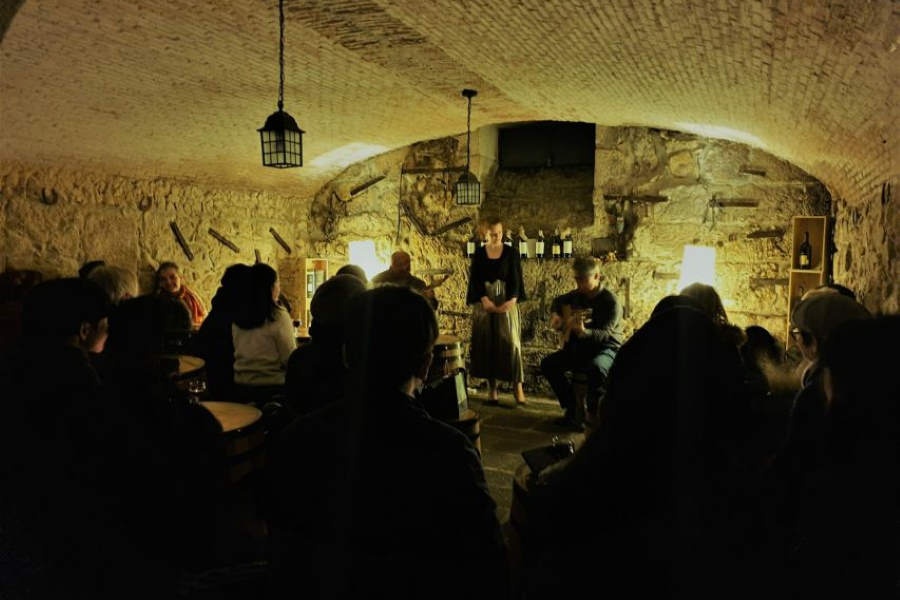
The sound must have intensity, focus, and detail. And this without microphones, because then you will feel more connected to the fado singers and guitarists and also because the natural vibrations contain more richness and authenticity.
Understanding a fado show
For you to better appreciate a fado show, it’s important to understand some of the elements that make it up:
Repertoire
In the first place, it is important to understand that fado is not, in itself, sad music. In its most authentic form – “Fado Tradicional” (traditional fado) – there are many fados to express joyful emotions. The fado singers have total freedom to choose the poems they want to sing and the themes (but most fado singers like to sing the sadness of love).
But nowadays, in most fado concerts, except in Ideal Clube de Fado which is exclusively dedicated to traditional fado, 5 different styles are presented:
- Fado Tradicional
- Fado-canção
- Marchas
- Folclore
- Other songs
Fado Tradicional is fado in its purest state, the most authentic tradition of classic fado. It is a song without a chorus and the same melody can be sung with different poems. It is the style where there is more freedom for improvisation and interpretation.
Examples: Fado Corrido, Fado Menor, Fado Alberto, Fado Bailado.
The fado-canção is a style with a chorus and the melody is created for a specific poem. As the name says (“canção” means song), there is an aesthetic mix between fado and other songs. The best known fado melodies are in this style.
Examples: Ai Mouraria, Nem às Paredes Confesso, Vielas d’Alfama, Lágrima.
The March is not fado. It is a popular style associated with summer celebrations of popular saints. The song is divided into two parts: the development of the song in minor mode and a chorus in major mode.
Examples: Lisboa Antiga, Marcha d’Alfama, De Rosa ao Peito (popularized by Mariza under the name Rosa ao Branca).
Folklore is not fado either and includes several traditional styles from Portugal. They may be adaptations or they may be folklore-inspired creations. These are mostly festive songs in a major key.
Examples: Fadinho Serrano, Bailarico Saloio, Fadinho da Ti Maria Benta, Sr. Vinho.
When at a concert you are encouraged to clap your hands to the rhythm of the music, you will probably be listening to marcha or folklore.
There are also other songs that have gained a lot of popularity, but that, in my opinion, cannot be included in the fado-canção category because they are either too far away from the fado language or their origin was in musical contexts outside fado.
Examples: Uma Casa Portuguesa*, Abril em Portugal (“Coimbra”), Chuva, Dia de Folga, Meu Amor de Longe, Barco Negro.
Read my article on styles in fado if you are interested in going deeper into this subject.
*It is not a mistake. This song, despite being sung in almost every show (effect of uncritical normalisation) is a satire on a poor and oppressed Portugal, was written in Africa, in a cosmopolitan hotel in Mozambique, and was born from a picaresque episode. Click here to read more about it.
Instruments and musical dynamics
Usually you’ll see three people on stage: the fadista (voice), the guitarist (Portuguese guitar) and the another guitar player (classical guitar). Sometimes a bass player is also included.
In this ensemble there is an instrument with a distinctive sound that is called the Portuguese guitar. It has 12 double strings (6 orders) of steel and is descended from the European zither and the English guitar.
The fadista’s job is to sing the poems in such a way that the melody and the musical dynamics he imprints reflect the message he is transmitting.
The guitarist has the role of playing the initial melodies, of supporting the classical guitar, of creating a musical dialog with the voice, and also of creating musical textures and colors.
The classical guitar player sets the rhythm, makes the basses and also defines the harmonic path, in a specific fado swing. It is the foundation of all music.
When there is a bass player, he shares the responsibility of the basse notes with the classical guitar player
Fado lives mainly from improvisation and interpretation. There is no official score that one has to follow. A good interpretation respects the identity of a fado, but at the same time includes original interpretative elements.
The musical structure of a fado usually has two parts (A and B). It usually starts with a short instrumental introduction related to part B. Since it is the guitarist who plays the melody, it is up to him to define what he wants to do. The introduction can either be a mere way to help the fadista get into the music, or it can be an inspiring musical moment for everyone.
Since it is not usual to have group rehearsals, the dynamics created among the musicians are spontaneously carried out on the spot. And in fado there is a constant musical game between everyone.
The most remarkable is the melodic dialog between the voice and the Portuguese guitar. But the classical guitar also enters this interaction in a more discrete way with the basses and harmonic textures.
Then a series of musical dynamics occur at the level of intensity (crescendo, diminuendo, forte, piano, etc.) that can be provoked by everyone, although it is normally the fadista who has the most influence.
There is also the suspension, which consists of a moment, usually preceded by a rallentado, in which the accompaniment stops and the fadista creates an expressive moment in which he sings freely.
Sometimes, in the middle of the fado, there is a Portuguese guitar solo. The guitarist is free to recreate the voice melody or to improvise a different melody.
There is also the custom of playing guitars at some fado shows. They are compositions for Portuguese guitar, without voice, and they don’t need to be framed in the style of fado.
Etiquette at a fado performance
Since one of the qualities of a good fado experience is a good audience, I will help you understand how your behaviour at a fado concert can contribute to a good show.
Silence
Fado, despite being a popular song, should be listened to in silence. It is not a music to make ambience or to cheer up a meeting among friends.
It should be kept in mind that the performers are making music in real time (they are not reproducing something they have rehearsed countless times) and are entirely focused on communicating with the audience. If people are talking, besides being a strong deconcentration factor, the artists will think that the audience doesn’t want to listen, which will decrease the quality of the performance.
On the other hand, being an auditive experience, it loses quality if there are other sounds besides the music. And if you’re talking at the same time as you listen, you won’t be in a state of sharing and complicity with the artists, which is the main thing in fado, and you’ll also disturb those who want to listen in silence.
Cell phone use
In order to have silence, it is necessary to turn off the cell phone or remove the sound and vibration from it. Using your mobile phone for taking photographs or for filming is generally well accepted, as long as the lights and flash are inactive. But be careful not to disturb the people behind you with your mobile phone screen.
Clapping hands
Clapping after each song is allowed and appreciated by the performers. It’s one of the best ways to show that you’re enjoying the music and giving that feedback is important for artists.
However, it is not recommended to clap your hands to accompany the fados because clapping gets in the way of the person doing the rhythm and makes it difficult for the musicians to hear each other. This applies to fado, but in marchas or folklore it is normal that they ask for your collaboration.
Singing with the fado singer
Unless you are requested to, which can happen with marchas, folklore and some of the more popular fado-canção songs, you should not sing with the fadista, as it interferes with his interpretation.
Misunderstandings about fado in Porto
Fado in Porto has been subject to some unfair considerations. It is therefore important to demystify some mistaken ideas that have been built up about the reality of fado in this city.
In Porto there is almost no live fado
In Porto there are dozens of events with live fado every week. To get a better idea, here are all the types of experience and their places.
Fado in Porto is touristy and in Lisbon it’s authentic
If you think that being a tourist is having lots of tourists at events or depending on them, then Lisbon and Porto are in the same position.
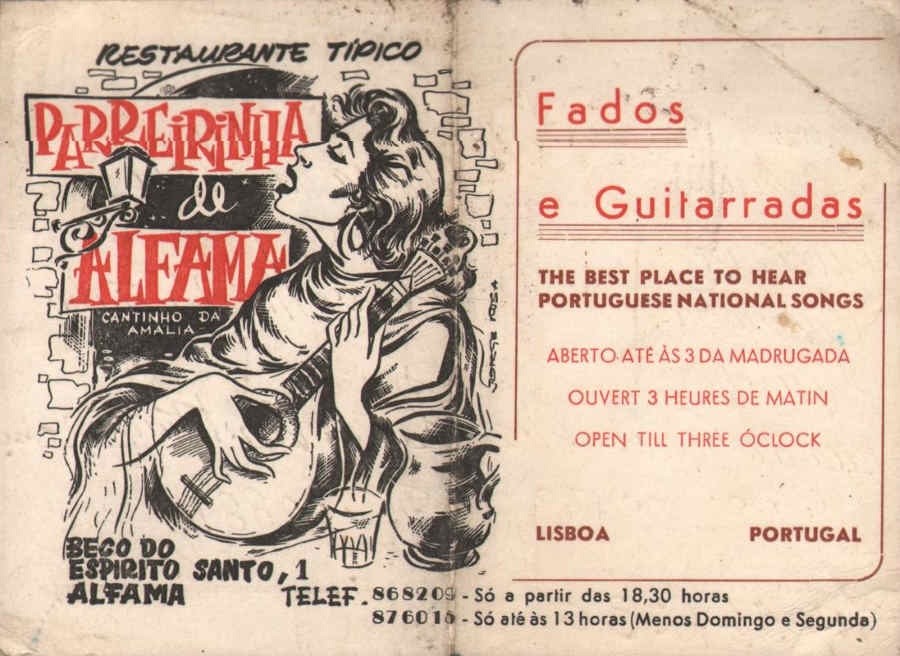
Look at this old postcard from A Parreirinha de Alfama, one of the most important Fado houses in Lisbon, where Portuguese, English and French coexist.
“Parreirinha is a smaller, more typical, more Portuguese house, with more Portuguese people. It doesn’t have as much tourism as Pacheco. He has a big house. It would be a problem for him if he only worked with Portuguese people. Even Dona Argentina has many foreigners. There are groups every day. If it wasn’t like this, nobody would survive. Unfortunately, the Portuguese don’t go to fado. They can go to fado at the weekend and the houses can’t… We work every day.
Alcindo Carvalho, Fado Falado – Um Século de Fado
In 1989, at a time when the fado houses in Porto were in crisis with many of them closing (there were few tourists in Porto) Alcindo Carvalho talks about the great affluence of foreigners in Lisbon’s fado houses and highlights the importance they have for the survival of these houses.
Nowadays, both in Porto and Lisbon, local fado businesses are mainly frequented by tourists. But in Lisbon, where there has always been more tourism than in Porto, Fado has been one of the main tourist attractions for longer. And in recent decades the influx of tourists has not only contributed to the maintenance of Lisbon’s fado houses, but has also been the main factor in the birth of many more.
From my point of view, rather than looking at the number of tourists, because most of the clients of the professional fado places in Porto and Lisbon are foreigners, there are other more important aspects:
– Do the artists sing real fado or do they adapt the repertoire to the less experienced ears of foreigners and interpret softer things that are not fado?
– Is the quality of the performers good? Are they giving their best during their performance?
– Are customers treated in a warm manner or with indifference?
I think when determining a good place, considering these issues is much more important than counting the number of foreigners vs locals.
Amateur fado places offer a more authentic experience
Some tour guides think that places of fado vadio, because they have fewer foreigners, are more genuine. But, as I was able to explain, this argument is poorly founded and there are other more important things to take in consideration.
Besides, in these places the conditions are not better and it won’t be by listening to amateur artists that you will have a better notion of what real fado is.
Concluding
First of all, thank you for taking the time to read this larger than normal article! I hope it has helped you to better understand the complexity of fado in this city.
Whether you’re passing through or living here, don’t miss out on the most important musical expression of this country through a live show.
